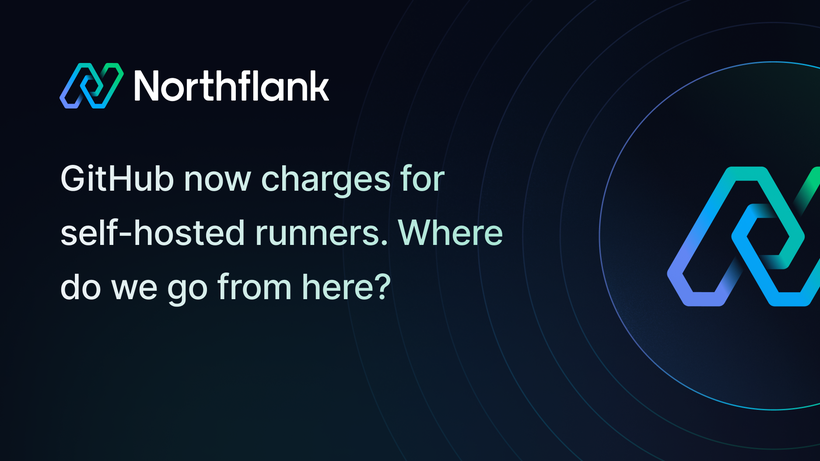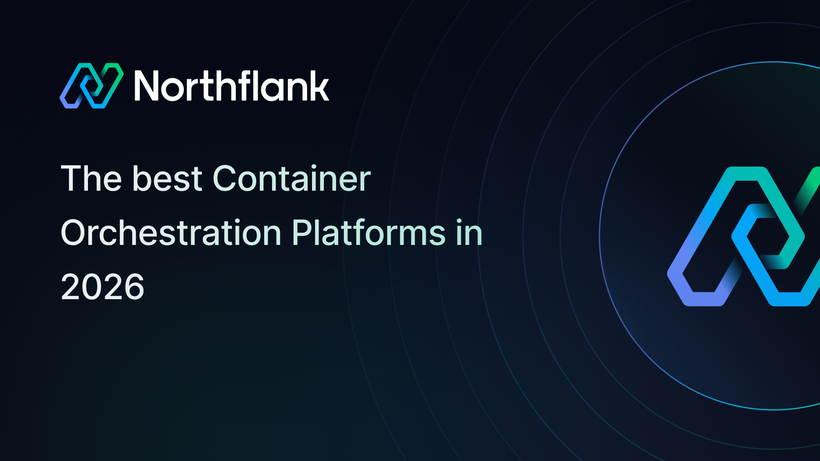

The best GitHub Actions alternatives for modern CI/CD in 2025
If you're a developer or engineering lead, chances are you’ve either tried or are currently using GitHub Actions. It’s built right into GitHub, uses a clean workflow syntax, and makes it easy to automate builds, tests, and deployments.
But while it’s a solid starting point, GitHub Actions isn’t built for every team or every project. As your infrastructure gets more complex or your team’s needs evolve, you might start running into limitations that slow you down or add unnecessary friction.
If that sounds familiar, you’re not alone.
In this guide, we’ll take a closer look at where GitHub Actions often struggles, what to look for in a modern CI/CD platform, and why a tool like Northflank might be a better fit for teams that value speed, flexibility, and simplicity.
If you don’t have time to dive deep, here’s a quick comparison of how GitHub Actions stacks up against other CI/CD platforms in the areas that matter most:
| Feature / capability | GitHub Actions | Northflank | CircleCI | GitLab CI | Buildkite | Travis CI | Harness |
|---|---|---|---|---|---|---|---|
| CI/CD hosting | Cloud-only | Cloud and self-hosted | Cloud and self-hosted | Cloud and self-hosted | Hybrid (self-hosted agents) | Cloud and self-hosted | Cloud and self-hosted |
| Container-native pipelines | Partial (via Docker actions) | Docker and Kubernetes support | Docker support | Docker support | Container-based agents | Basic Docker support | Docker and Kubernetes support |
| Integrated deployments and hosting | No | Yes (services, hosting, databases) | No | No | No | No | No |
| Ease of setup | Simple for basic cases | Simple, developer-first | Moderate | Moderate | Requires agent management | Simple, older interface | Enterprise-focused |
| Scalability and parallelism | Limited concurrency on free tier, paid tiers available | Auto-scaling, built-in parallelism | Customizable | Customizable | Highly scalable | Limited parallelism options | Enterprise-grade scaling |
| Pricing model | Usage-based, tied to GitHub | Transparent, predictable | Usage-based | Usage-based | Flat pricing plus infrastructure | Usage-based, limited free tier | Enterprise-tier pricing |
For small to medium projects entirely inside the GitHub ecosystem, GitHub Actions works really well. It’s tightly integrated, straightforward to configure, and uses a clean, YAML-based syntax.
However, when projects grow and infrastructure requirements get more specific, GitHub Actions can start to show its limits. Common pain points include:
Build times often slow down on larger or more complex projects. Concurrency limits and less powerful shared runners lead to longer queues and slower feedback loops.
There’s a growing ecosystem of startups working to solve this by offering faster, self-hosted GitHub Actions runners, including tools like Depot, Warpbuild, and Namespace Labs. These platforms let teams host their own high-performance runners while still using GitHub Actions, improving build speed without fully switching CI/CD providers.
Increasing parallel jobs or deployments gets expensive fast. GitHub’s tiered pricing model can make it difficult to scale without either hitting limits or paying more than you planned.
You’re largely dependent on GitHub’s managed runners. While self-hosted runners are an option, managing them requires extra overhead. Teams that need specific security, networking, or infrastructure setups might find this too limiting.
If you need to host applications, manage databases, or run services alongside your CI/CD pipelines, you’ll need to connect third-party tools. This increases complexity and introduces more potential points of failure.
Usage-based pricing seems simple at first, but costs can quickly spike as your pipelines get heavier or your team grows. Variables like build minutes, concurrency, and storage costs add up and can be hard to predict.
GitHub Actions works best when your code, workflows, and secrets stay inside GitHub. If your future involves hybrid, multi-cloud, or decoupled systems, relying too heavily on a single platform can limit flexibility later on.
GitHub Actions is great for a lot of use cases, but it might not be the best long-term fit if:
- Build times are slowing down, or you’re hitting concurrency limits
- You need to manage hosting, databases, or services alongside your deployments
- Your workflow costs are becoming hard to forecast
- You need tighter infrastructure control or custom runtime environments
- You want to move toward a multi-cloud or hybrid infrastructure strategy
Before you jump into another tool, it’s worth getting clear on what really matters to your team. Here are a few things to keep in mind:
Does it support monorepos, microservices, staging environments, and custom triggers without forcing awkward workarounds?
In modern fullstack applications, builds and preview environments are tightly coupled. One of Northflank’s biggest advantages is that because your builds run directly on the platform, it can spin up full preview environments — including services, databases, and deployments — for every branch almost for free. This makes testing, collaborating, and iterating on new features much faster and smoother.
Builds and deployments should stay fast, even as your projects grow. It should be easy to scale up parallel jobs without hitting hard limits.
Look for something that integrates natively with Docker, Kubernetes, cloud providers, databases, and other tools you already use.
Good logs, clean dashboards, easy setup, and clear error messages save time and reduce frustration when something breaks.
Do you need everything fully managed, or do you prefer self-hosted control? Some teams need flexibility here for security and compliance reasons.
As your team and projects scale, you need to know what you’re paying for. Avoid platforms with hidden fees or unclear pricing models.
Here’s a look at some of the best CI/CD platforms you might want to consider, depending on your team’s priorities:
Northflank is a modern, cloud-native platform built for developers who want to ship faster without getting bogged down by infrastructure headaches. It’s more than just a CI/CD tool — it’s a unified platform for building, deploying, hosting, and managing services and databases.

Features
- Lightning-fast, container-native CI/CD pipelines
- Native Docker and Kubernetes support
- Instant preview environments for every branch
- Built-in release management and automated deployments
- Fully integrated hosting and managed databases
- Auto-scaling, parallelism, and built-in metrics
- Clean, developer-first interface with easy configuration
- Secure, multi-cloud infrastructure with zero management overhead
Best for
Teams that want a fast, fully-managed, developer-first CI/CD platform that handles builds, deployments, hosting, and services under one roof. Great for modern microservices, staging environments, and production-ready cloud infrastructure without the ops burden.
For teams not ready to fully move away from GitHub Actions, Northflank also makes it easy to integrate existing GitHub Actions workflows with its platform. You can keep your familiar CI processes while using Northflank for deployments, services, and hosting. Here’s how it works.
CircleCI is one of the most established CI/CD platforms out there. It’s highly customizable, integrates with just about everything, and offers both cloud and self-hosted runners.

Features
- Customizable YAML-based workflows
- Docker, Kubernetes, and VM support
- Powerful caching, parallelism, and resource controls
- Extensive integrations with cloud providers, registries, and notification tools
- Self-hosted options for infrastructure control
Best for
Larger engineering teams with complex build and deployment pipelines that need flexibility, integrations, and proven enterprise reliability.
Downsides
Setup can be more involved for simple projects, and costs can grow quickly at scale. No native hosting or service management.
GitLab CI comes tightly integrated into the broader GitLab DevOps platform but can be used with external repositories as well. It’s a good option for teams already invested in GitLab.

Features
- CI/CD pipelines built into the GitLab UI
- Support for Docker, Kubernetes, and cloud providers
- Integrated project management, issue tracking, and monitoring
- Works with both cloud-hosted and self-hosted environments
- Flexible permissions and security settings
Best for
Teams that already rely on GitLab and want an all-in-one DevOps platform with built-in CI/CD capabilities.
Downsides
Less flexible if you need advanced infrastructure or multi-cloud setups. The UI and debugging experience can feel dated compared to newer platforms.
Buildkite is built around a hybrid model where pipelines run from the cloud, but builds happen on your own infrastructure using lightweight agents.

Features
- Agent-based system for maximum infrastructure control
- Integrates with any cloud, VM, or on-prem environment
- Customizable pipelines and plugins
- Clean cloud UI for managing pipelines and builds
- Scales well for large, complex codebases
Best for
Teams with strict security, compliance, or infrastructure requirements who need full control over their CI/CD environments, while still using a cloud-managed control plane.
Downsides
Requires you to manage and scale your own build infrastructure. No built-in hosting, services, or databases.
Travis CI was one of the first popular cloud CI/CD platforms. It’s easy to set up and still widely used for smaller projects and open-source repositories.

Features
- Simple YAML-based configuration
- Supports cloud and self-hosted runners
- Integrates with major cloud platforms
- Basic Docker support
- Free tier for open-source projects
Best for
Simple or open-source projects that don’t need advanced infrastructure, parallelism, or scaling.
Downsides
Outpaced by newer tools in terms of speed, container-native features, and scalability. Enterprise features are limited.
Harness is an enterprise-grade platform focused heavily on continuous delivery, governance, and security.

Features
- CI/CD pipelines with advanced deployment strategies
- Integrated feature flags, rollback, and approval workflows
- Canary and blue-green deployment support
- Audit logging and compliance tools
- Multi-cloud and hybrid infrastructure support
Best for
Large enterprises with regulated, complex release processes that need strict deployment control, rollback strategies, and enterprise security.
Downsides
Overkill for small to mid-sized teams. More complex setup and pricing than developer-focused platforms.
Northflank stands apart because it’s built for modern developers who want a simple, scalable, container-native platform that handles not just CI/CD, but also deployments, hosting, services, and databases in one clean, managed environment.
It cuts out the glue work most platforms leave to you — no managing infrastructure, no bolting together services, no juggling costs across multiple vendors. It’s everything your team needs to build, ship, and run applications at scale, without the operational overhead.
If you’re ready to upgrade from GitHub Actions or frustrated by the limitations of older CI/CD platforms, Northflank is worth a look.
Choosing a CI/CD platform isn’t about finding the most popular tool — it’s about finding the one that fits your team’s workflow, infrastructure, and scaling plans.
GitHub Actions is a great starting point, but as your projects and infrastructure grow, it’s worth looking at modern alternatives built for today’s development environments.
Northflank is especially strong if you’re looking for a developer-first, fully-managed platform that brings CI/CD, hosting, databases, and services together into one clean, scalable workflow. It’s fast, flexible, and built to grow with you.
If your team’s ready for a simpler, faster way to manage builds, deployments, and infrastructure, Northflank is well worth a closer look.


